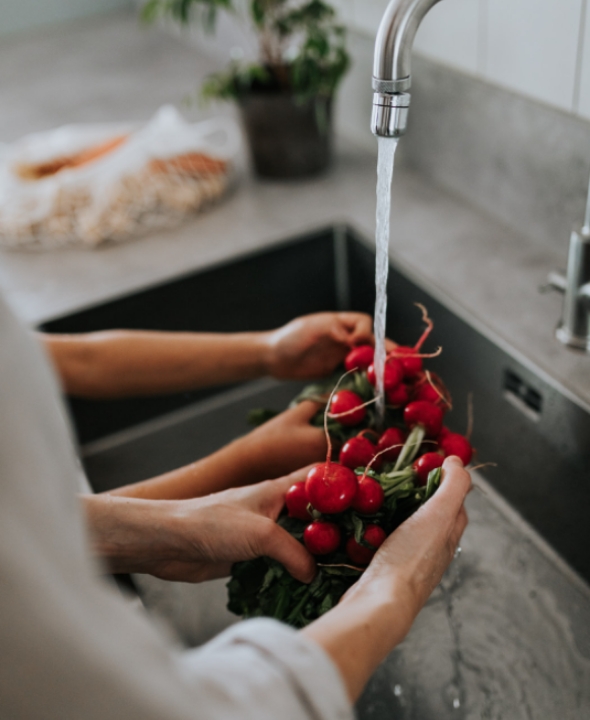Society
The Water Cycle and Society
The journey to clean water
We drink the same water the dinosaurs drank, and which future generations will drink. The Earth’s water is never consumed. It is used and returned in an eternal cycle. Our drinking water is sourced from aquifers. It is then purified in water treatment plants and delivered as drinking water through pipelines all the way to the tap. Used drinking water then flows into the sewage system through pipes to the treatment plant – where the water is purified in several stages before being returned to nature.
Water Challenges
In the Nordic region, water is abundant. But that doesn’t mean clean water is guaranteed. Some of the water-related challenges we face include:
• Eutrophication and algae blooms in lakes and seas when substances like phosphorus and nitrogen are added to water due to human activities.
• Hard-to-degrade and hazardous substances in society negatively affect our water.
• Climate change is expected to bring more intense rainfall, increasing the risk of floods and pollution of water sources from which we collect drinking water.
• Groundwater in many places risks contamination or over-exploitation.
Global Water Challenges:
In 2015, the UN and WHO estimated that more than 650 million people lacked access to clean water and that 2.3 billion people lacked access to basic sanitation.
Due to global warming, water availability is expected to become even more limited worldwide.
Sewage
A functioning sewage system is fundamental to our health and environment. It efficiently and hygienically manages and purifies wastewater. In the Nordic region, we have thousands of treatment plants and hundreds of thousands of kilometers of sewage pipes.
Drinking Water
Cold drinking water is our most controlled food product. We have access to it around the clock, directly from the tap. There are approximately 1,400,000,000,000 trillion liters of water on Earth, but only a small portion is drinkable. In Sweden, we use an average of 140 liters* of water per person per day, distributed roughly as follows:
60 liters for personal hygiene
30 liters for toilet flushing
15 liters for dishes
15 liters for laundry
10 liters for food and beverage
10 liters for other uses
*The number is based on Swedish water meter data.
